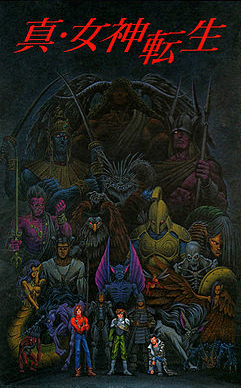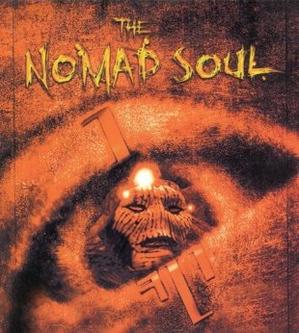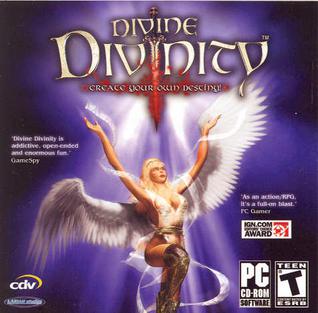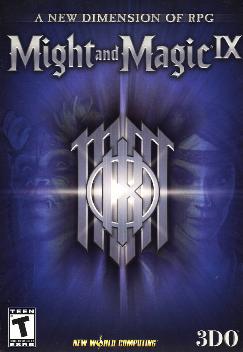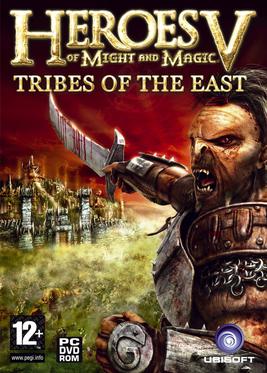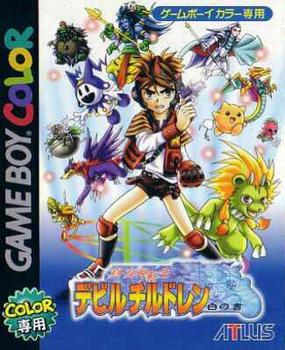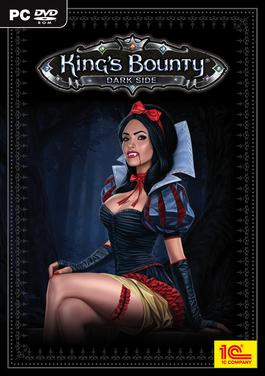Setting
Nearly a thousand years ago the Wars of Fire raged across the face of Ashan. Men, Elves, Dwarves, and their allies pitted themselves against the hordes of Demons. Great devastation was wrought, but in the end the allied forces were victorious. Their victory was largely due to the heroic sacrifice of the wizard known as Sar-Elam, the Seventh Dragon. Using his almost god-like powers and supported by his fellow wizards, Sar-Elam cast the Demons out of the world into a limbo of eternal fire. From the essence of his spirit, Sar-Elam wove a prison to contain the Demons forever. Something went wrong during Sar-Elams ritual, however. The magic he summoned failed to create a complete prison; the tiniest of flaws remained in the otherwise impervious barrier, a weakness that allowed Demonic influence to seep into the world during times of a lunar eclipse. Angry but patient, the Demons lurked in their prison waiting ... and planning.
All that remained of the Seventh Dragon was his skull. Now called the Skull of Shadows, it was spirited away by those loyal to the goddess Mother Asha, creator of the world and source of all magic. They hid it in an ancient temple on a deserted island, far from the machinations of Men, Elves, or Demons. There the Skull sits, awaiting the day when its powers might be needed again.
67 years after Sar-Elam's death, his disciple Sar-Shazzar prophesied that a half-demon, half-human child would one day be born; a walker between worlds who would be known as the "Dark Messiah" and would use the relics of the Seventh Dragon to shatter the Demons' prison forever.
969 years after Sar-Elam's death, after the young king Nicolai Griffin was killed by a demon renegade, the demon sovereign, Kha-Beleth impregnated Nicolai's former-fiancée, Isabel Greyhound, and before she could have been saved, she gave birth to the Dark Messiah.
20 years later, Sareth's story begins.
Story
The protagonist of Dark Messiah is a young man named Sareth, who is under the tutelage of the Wizard Phenrig. After years of studying the arts of magic and physical training in the arts of war, he is finally taken on an expedition to retrieve a rare artifact known as the Shantiri Crystal. After finding the Crystal and disposing of the would-be rival expedition, Sareth is tasked to bring the crystal to an associate of Phenrig's, the Wizard Menelag, who is also the lord of the city of Stonehelm. Menelag and Phenrig have certain "mutual interests" that involve finding an artifact called the Skull of Shadows. Menelag apparently is unable to continue his search without the Crystal. To guide him on his way, a spirit named Xana will reside in Sareth's mind.
Shortly after arriving in Stonehelm, Sareth witnesses an undead cyclops and a small army of ghouls sent by the Necromancers breach Stonehelm's defenses and begin to overwhelm the guards. Sareth is recruited to help in the defense effort by taking control of a ballista. Using this, he manages to stun the undead cyclops long enough for a guard to stab it in the eye, thus killing it. Seeing their most valuable asset destroyed, the remnants of the invading force beat a hasty retreat. Sareth then resumes his search for Menelag. Upon reaching the front gate of Menelag's manor, Sareth is greeted by Leanna, the young niece and pupil of Menelag. That night, the three enjoy a small feast in Sareth's honor after which Menelag informs Sareth that they will set sail the following morning to resume the search for the Skull.
In the middle of the night, the crystal is stolen by a ghoul, who murders Menelag in the process. Sareth then chases the ghoul to a warehouse, where he finds the necromancer Arantir using the crystal's power to open a portal to Nar-Heresh, the necromancer city. Sareth manages to steal the crystal back and escape to the docks, where he falls asleep. In a dream, he recalls his meeting with Phenrig, except that Phenrig is saying that he does not trust Sareth on this mission alone and says that he needs someone to "hold his leash" as he summons Xana. In the dream, Xana appears to be a demon and attacks Sareth. Sareth and Leanna leave Stonehelm by boat and travel to the island with the Skull of Shadows. While en route, Sareth has another dream in which he kills Leanna, and Arantir alludes that she is only the first of many victims.
After arriving, they find the expedition destroyed, and most of the men dead, killed by Orc warriors. Sareth and Leanna are chased into the Temple of the Skull by a Pao kai which Sareth kills a little later with a gate, and Sareth proceeds alone to the top of the Temple, where he places the Shantiri Crystal, and defeats the Orc chief Aratok in a duel. Arantir then reveals himself and appears to kill Leanna. Sareth, however, escapes to the crypt below and retrieves the Skull of Shadows. Sareth then has a vision of the Demon Sovereign Kha-Beleth, who reveals himself to be Sareth's father. Kha-Beleth names Sareth the Dark Messiah, and then commands to be released using the power of the Skull. Sareth wakes up to see Arantir, who takes the skull and then impales Sareth on a spike.
Fueled by Xana's demonic power, Sareth wakes up alive and gains the power to transform into a demon, which grants him uncanny strength at the cost of health. Stripped of all his belongings, Sareth uses the demon form to fight off the Orc guards as he recovers his items. He manages to leave the island and returns to Stonehelm. Once there, he takes the portal to Nar-Heresh. There, Sareth witnesses Leanna - who is still alive - being thrown into a spider pit. Saving Leanna is optional, but impacts the possible endings that the player may receive. Regardless of the player's choice, Sareth discovers Arantir's plans to sacrifice the entire population of Stonehelm in order to permanently seal Kha-Beleth's prison.
Sareth then returns to a besieged Stonehelm, fighting alongside the remaining human resistance. If Leanna was rescued in the previous chapter, Sareth may visit the sanctuary in order to purge Xana from his body. If Sareth proceeds with the cleansing, he loses the ability to transform into a demon, but gains the ability to use powerful holy weapons. If Sareth is unable or unwilling to undergo the cleansing ritual, nothing will change. Whatever the case, the choice determines which endings the player may receive.
In the ancient necropolis over which Stonehelm was built, Sareth is eventually reunited with Leanna. If the player left her behind in the spider pit, she appears as a Lich, who Sareth then destroys. If Sareth saved her, but did not cleanse himself, she will attack him. If Leanna was rescued and Sareth cleansed himself, she will join Sareth in the final chapter.
Sareth then makes his way through the necropolis and eventually catches up with Arantir as he is about to perform the ritual. When Sareth attacks Arantir, he summons his Avatar of Death, also seen in Heroes V: Tribes of the East (the dragon in Dark Messiah does resemble a pao kai but it is still uncertain as to what the dragon really is). Sareth fights off the Dragon, which forces Arantir to perform a resummoning, during which Arantir is vulnerable. Eventually Arantir is defeated, leaving Sareth to make his final decision for the Skull.
The player may use the Skull to lock his father away forever, or destroy the Skull and free his father. Each option offers a different ending. The ensuing cut scene will vary slightly depending on whether it is Leanna or Xana that accompanies Sareth at the end of the game, giving the game a total of four different endings.



